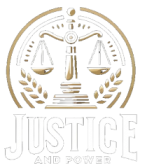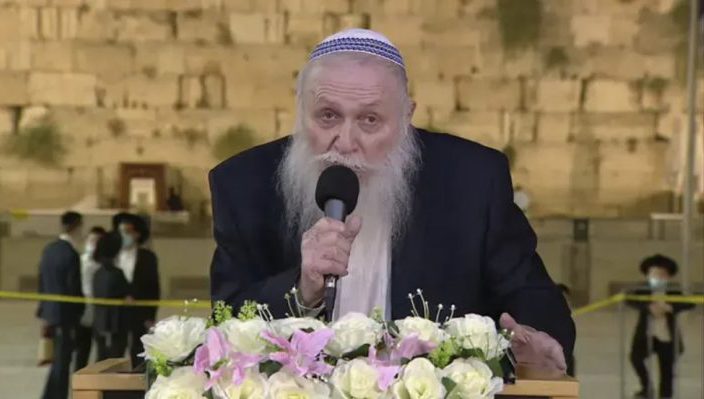From the words of the Chachamim it is clear that the Redemption process will never come to an end, despite possible setbacks.
The following article is an extract from Rabbi Chaim Drukman’s book, “Step by Step,” an enlightening discussion of the process of redemption that is taking place in our generation. (Adapted and translated by Moshe Goldberg)
“There Will Not be a Third Destruction”
During the Second World War, Rabbi Yitzchak Isaac Herzog, Chief Rabbi of Eretz Yisrael, went to the United States for medical treatment. When the Nazi armies seemed about to conquer the land, Rabbi Herzog decided to return home. Franklin Roosevelt, the President of the United States, advised him to remain in America because of the imminent danger. Rabbi Herzog said, “According to our tradition, the Temple will only be destroyed twice. A third destruction will not take place!”
Rabbi Herzog declared that from the moment the “visible redemption” has begun to appear there may be setbacks but never complete destruction. We will see that the idea that the Third Redemption will last forever is not merely a “gut feeling” but rather a well-founded clear principle that appears throughout Jewish history again and again – beginning with the Sages and through the Rishonim and Acharonim.
The Sages
We begin with a commentary written by the Sages:
There are ten epic poems. The first nine appear in the Bible and the tenth one will be composed in the distant future, as is written: Sing a new song to God; sing His praises from the ends of the Earth (Yeshayahu 42:10).
All the songs from the past are referred to in the feminine – shirah. Just as when a woman gives birth, so past salvations were followed by subjugation. But the future salvation will not be followed by subjugation, and therefore it is masculine – shir. Like a man does not give birth, so the future salvation will not be followed by subjugation, as is written, Yisrael will be saved by God with everlasting salvation; for all eternity you will not be ashamed or confused (Yeshayahu 48:17, Mechilta, Beshalach, Massechta D’Shira, 1).
We might have thought the community of Yisrael could be subjugated again after the Redemption. But we are taught they will have eternal happiness. Yisrael is like a bride, it will never be enslaved again!
A similar statement is found in the Zohar:
The Holy One, Blessed be He, took an oath that He will build Jerusalem… And he swore that the community of Yisrael will not be sent into exile again, and He swore that rebuilt Jerusalem will never be destroyed. (Zohar, vol. 1, 114a)
Finally, with respect to the verse in the passage of redemption and repentance, And the Lord your God will bring you to the Land which your fathers inherited and you will gain possession of it, and He will do good for you and increase you more than your fathers (Devarim 30:5), the Sages comment:
Although your fathers were redeemed, they were recaptured and enslaved, but as for you, once you are redeemed, you will no longer be enslaved. (Talmud Yerushalmi, Shevi’it 6:1).
Similar statements are also found in other sources: Tosafot Pesachim; Midrash Tehillim; Pesikta Rabbati; Pesikta D’Rav Kahane; Tanchuma; and Beraishit Rabba.
From the words of the Chachamim it is clear that the Redemption process will never come to an end, despite possible setbacks and advances.
Rishonim
This principle also appears in the writings of the Rishonim, indicating that there will be no turning back from the last Redemption. About the verse, Do not believe the lies, saying: These are God’s Temple, God’s Temple, God’s Temple (Yirmiyahu 7:4), Rabbi Natan, author of the Aruch, writes:
These are God’s Temple, God’s Temple, God’s Temple – This refers to the First Temple, the Second Temple, and the Third Temple. We can conclude that two Temples will be destroyed, but the third one will last forever. (Aruch, item “Heichal,” based on Nazir 32b)
The same idea is found in the Tosafot, Nazir 33b, s.v. Amar Rav Assi.
However, we might ask: The Aruch and the Tosafot are referring to the “Heichal” – the Sanctuary in the Temple. How do we know this holds for the entire process of Redemption? The answer is that the Temple does not stand on its own. It is part of the rebuilding of Jerusalem, the process of Redemption. It is, in fact, the high point of the process, the pinnacle of the “construction of Jerusalem.” It is not a separate and independent process, Heaven forbid.
This is clear from the text of the “Havineinu” blessing, the short prayer that serves as an abstract of the Amidah:
Give us the understanding, our God, to know Your ways… And let the righteous ones be happy in the building of Your city and in the construction of Your Temple…
“Let the righteous ones be happy” corresponds to the blessing, “About the righteous ones,” and as a reminder of the blessing of “rebuilding Jerusalem,” we refer to both “the building of Your city” – a direct reference to Jerusalem, meaning the Redemption – and “the construction of Your Temple.” Thus, we see that the Temple is indeed part of the blessing of rebuilding Jerusalem.
The return to Jerusalem and the construction of the Temple are part of the same process.
The same idea appears in writings of sages who lived at the end of the era of the Rishonim, at the time of the expulsion from Spain. These include the Radak, Ramban, Rabbi Don Yitzchak Abarbanel, and Rabbi Avraham Saba.
Acharonim
As examples of recent authorities, see Malbim and Rav Kook:
In his commentary on the Tanach, Malbim regularly repeats the theme that the Redemption process will never end. For example, for the verse, Behold God is my salvation, I will feel secure and I will not be afraid (Yeshayahu 12:2), he writes:
They can be sure they will never be sent into exile again, and the salvation will last for all eternity.
There are also several similar statements by Rav Kook:
The entire nation believes that there will not be any other exile after the Redemption, which we see starting to take shape. (Orot HaTechiyah 26)
In the “Vision of Redemption,” Rav Kook responds at great length to several questions about settling Eretz Yisrael. He quotes many relevant verses. For example:
They will no longer say: I swear by God who raised Bnei Yisrael up from the Land of Egypt, but rather: I swear by God who raised up and brought the seed of the House of Yisrael from the land of the north and from all the lands where He dispersed them, and they will dwell on their Land. (Yirmiyahu 23:7-8 )
Yirmiyahu continues to describe the Ingathering of the Exiles:
And I will set my eyes on them for the good, and I will bring them back to this Land, and I will build them and not cause destruction, and I will plant them and not uproot them. (Ibid. 24:6)
Rav Kook quotes these two verses together to show that this Redemption – about which it is written, they will dwell on their Land – will be eternal. That is why together with this he quotes a second verse, I will build them and not cause destruction.
What did Rabbi Herzog do?
We have seen that the Sages wrote that there will never be a third destruction. And what did Rabbi Herzog do when he was in the United States? It is now clear why he spoke with great confidence and declared: “According to our tradition, the Temple will only be destroyed twice. No third destruction will take place!”
And indeed, despite President Roosevelt’s warning, Rabbi Herzog returned home immediately and continued his work of participating in the redemption process.
May we, too, realize that current difficulties are part of redemption.(Ed.)
Rabbi Haim Druckman was a prominent and venerable leading figure in religious Zionism. He passed away at the age of 90 on December 25, 2022





